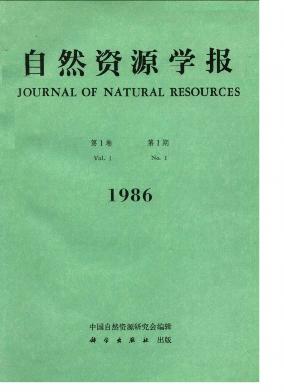Special Column:Celebration of the 70th Anniversary of IGSNRR, CAS
Hou Xueyu
Ecologically economics means that to develop economy one should consider the relationship between law of ecology and economics, and that between economic efficiency and ecological efficiency. To attain the goal mentioned above, economic policy is necessary. This paper deals with the following two pans:1. Ecologically economic view-points to exploit agricultural nature resources(1) Considering the economic efficiency, one must understand that natural conditions in in area are very complex. Orange trees can be planted in a local condition in central Anhui, but it does not mean that it can be extended everywhere in whole area. Tree species along highway is unique, and so different species adapted to various habitats should be selected.(2) The economic efficiency is related to the ecological efficiency. In the "great leap forward" drive of the late 1950s, people have reclaimed land from lakes only because of thinking to increase production of cereals. Consequently, the function of irrigation and drainage, fisherery as well as sideline products of lakes have been lost. The natural enemies of rats and mice such as foxes, cats, snakes, etc. are caught and told by the far- mers for foreign trade. In consequence, this behaviour has caused to increase the reproduction rate of rats and mice which eat large amounts of cereals, vegetables, fruits, and infect a certain disease posing a serious threat to people's health.(3) The economic law must correspond to the law of ecology. Oliveoil trees producing high yield of oil per hectare are widespread and commonly planted in the Mediterranean area, where the rainfall is low and sunshine is strongest in the world. However, from the ecological point of view, these trees are not fitted to extend in Anhui's climatic conditions.(4) The economic policy is a decisive factor to resolve the accomplishment of both efficiencies of ecology and economics. Fish-breeding is a rational use of water resource from ecological and economic view-points; however, the price policy of fishes and forages would decide to limit or promote the development of fishery.(5) To maintain the view-point of ecosystem is important to obtain economic efficiency. The problems concerning mountains, hills, rivers, farmland, forests, and roads should be tackled in a comprehensive way, as far as the prevention of floods by Huaihe River is concerned.2. Discussion on rational exploitation of mountains, hills, water resource, and fields in central Anhui(1) Protection of forests and afforestation in mountains should be ordered the priorities, since vegetation has been spoiled, and consequently, soil erosion is getting worse. Cultivation of tea trees, sideline production, fisheries, and animal husbandry may be promoted according to the local conditions in mountainous area. Selecting tree species planted on hills with acid and calcareous soills, one has to consider whether its biological and ecological character is fitted. Rice, wheat, and sweet potatoes can be raised in some suitable places. In addition, promotion of animal husbandry, sideline production, and fisheries may also be boosted in places.(2) Rational use of water resourcePromoting and improving the ecological environment is very important. One must comply to a certain degree with the laws of nature, including complicated relationship between man and water. Lakes should be recovered from reclaiming fields for fish-breeding, water-crops planting, irrigating, and navigating to develop their original functions. Of course, recovery would be taken place step by step.(3) Rational use and exploitation of fieldsDepressions, dry lands, paddyfields, and sandy soils should be planted with differentcrops or trees based on their biological and ecological characters. Intensive managementand rational use of chemical and organic fertilizers in crops should be made to increase?their yields. Attention must be paid to the problem of rural energy for which to plantfuel trees is most practical.
